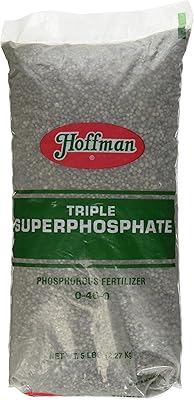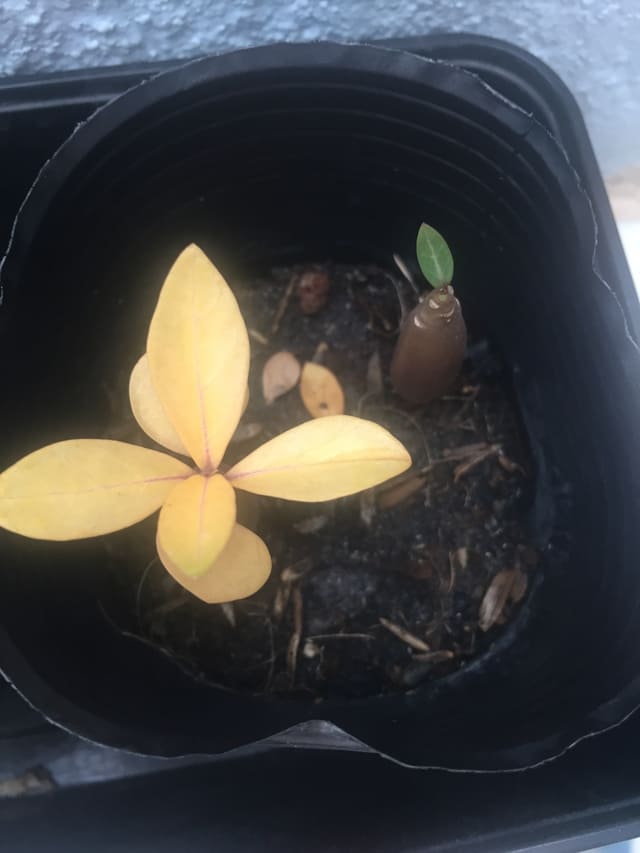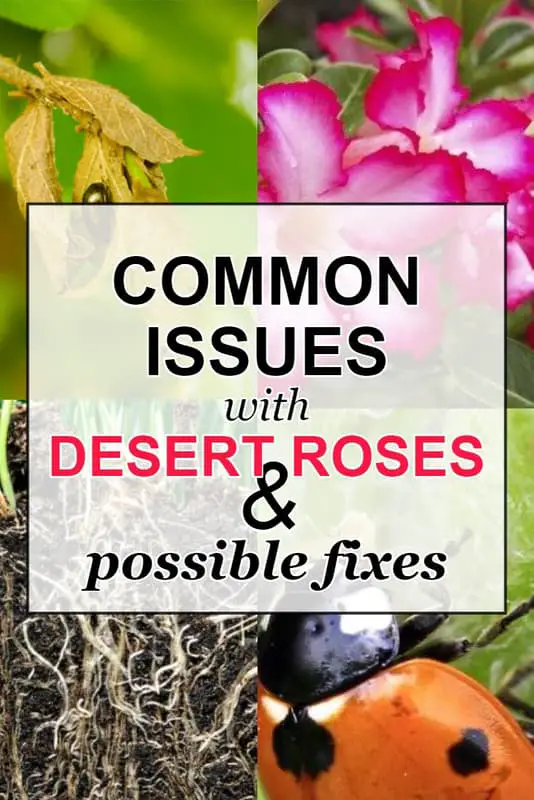When we’re growing our lovely adenium desert rose, sometimes it will grow strong & beautiful, and other times it will get sick and need our help.
We know how it feels when seeing your beautiful babies getting sick & weak. But don't worry. With our Sherlock hat and a magnifying glass in hand, together let's find out how to fix:
- Petals tearing apart
- Leaves curling
- Leaves turning yellow
- Roots getting rotted
- Soft adenium caudex
- Desert roses not blooming
Starting off first, let's see:
1. Petals Tearing Apart
/adenium-desert-rose-petals-tearing-up.jpg)
Diagnosis: You can notice this happening when the flower is very young—usually when it is just a bud. The usual desert rose flower will grow up with each of the petals closely attached to each other, forming a nice smooth tube.
In this case, however, you will see one or two petals tearing apart or separating from the other petals. Thus, no tube can be formed even when it grows bigger. On the same branch, you may see one bud with torn-up petals like this and the others still growing strong and healthy.
/adenium-petals-tearing-up.jpg)
Quick Fix: One potential idea for this is the genetic variety of the plant you’re having. This may just be one of nature’s diverse makeups & it's perfectly normal.
From one grower's experience, this may be a slight 'flaw' in the seed-grown adenium. The first flower the plant produces may be torn up. Then the following ones all bloom in good shape.
This is one reason why sellers sometimes sell these adenium at a cheaper price. They are good for enjoying the beauty but may not be suitable to get seeds for propagation. If you graft these torn-up flowers on other adenium branches, chances are high that the next round of flowers will also be torn.
Also, check the amount of sunlight you're giving your baby. Desert roses love full sun–the more, the better. Without enough sunlight, leaves & flowers cannot form beautifully.
Check if there may be any deficiencies in the plant's diet. The lack of phosphorous, a macro-nutrient, may affect flower & fruit development. With enough potassium, your flowers will grow stronger & with brighter colors.
| Some Good Phosphate |
|---|
 |
| 0-46-0 perfect for acid loving plants. |
Be sure, also, to give the adenium more water during the stages when it develops leaves and flowers. Producing those beautiful flowers and foliage requires a good amount of water.
One of the desert roses we have here in Zenyr Garden is currently having the same issue of torn-up petals. We'll try to experiment with some of these ideas and report back. Currently, things haven't improved and are still the same. We'd love to hear from you about any tips you have.
One of the readers in the comment section has shared that the torn-up pattern could be due to the temperature /seasonal pattern. The flower gets torn-up in the hot summer but in the winter it is smooth and beautiful. Truly a wonder and miracle.
After a while of observing it, we're still seeing the torn-up petals on the plant. Our guess is this may have something to do with the genetics of it or this specific plant/variety.
If you see adenium leaves curling up, let's see up next why this might be:
2. Leaves Curling Inward At the Tip
/adenium-desert-rose-leaves-curling.jpg)
Diagnosis: We have checked out some other sources about this leaf-curling issue. Some gardeners have experienced the same thing.
From their experience, the curling of the leaves may just be normal growing, and it should not affect the overall health of the desert rose.
If you only see one or two leaves on the plant curling up while the others are still in good shape, it may not be a big deal at all.
From a more technical point of view, the issue with leaves curling up may be the result of a potassium or nitrogen deficiency. Potassium is another macro-nutrient that is responsible for stem and root growth. Nitrogen is good for leaf & branch.
Quick Fix: We may try adding some more potassium and nitrogen by planting in some beans or putting some composted kitchen scraps into the soil. This way, we can then wait and see until the next round when the plant produces leaves and get good results.
Another very common problem many growers have is:
3. Adenium Leaves Turning Yellow
/adenium-desert-rose-leaves-turning-yellow.jpg)
Adenium leaves yellowing is probably one of the most common issues with desert rose. According to some growers, you may be over watering your plant. There’s an easy way to know this.
When you touch the adenium caudex, if it's too soft, then it may be lacking water. If the caudex feels just right, then it’s good.
If it's too hard, then you may be giving it more water than it needs.
The tree will also tell you by giving you signals. If there’s too much water, you may see some spots popping up on the caudex—just like pimples. The tree has to create exit ways for the water to get out.
Look for these spots:
/spots-on-adenium-caudex.jpg)
When you see this, you may need to reduce the amount of water. Or putting the plant somewhere else with more sunlight so it can use up the water it is storing inside. Alternatively, some folks pick the desert rose out of the soil, cut some parts of it roots, and hang the tree up to let it dry out.
Try touching the leaves. If on a gentle touch, the yellow leaves fall off almost immediately, then they are simply old yellow leaves, and everything is in its normal cycle.
See a normal yellow leaf falling off on a touch right here:
/normal-yellow-adenium-leaves-falling.jpg)
However, if you try touching or pressing down on the leaves a couple of times but they won’t fall off, then those yellow leaves may not be old leaves.
Rather, they may be young leaves experiencing some issues with water or diseases.
If you’re under-watering the plant, its caudex or the whole plant may start to shrink. Touching the caudex (aka the base), you will feel that it’s way too soft. But don't squeeze it too hard because that might damage the tree tissue. Then, you know you need to ramp up the amount of water.
But the question many people ask is:
How Can We Tell if We're Over-Watering or Under-Watering?
From our limited experience, we can begin looking at where the yellowing is starting from.
For example, if it starts to yellow from the tip of the leaves in, then this may suggest over-watering. One example of this is a little plant here:
/adenium-yellow-leaves-over-water.jpg)
The babies will have very similar reactions as the adult plants.
On the other side of the story, if yellowing starts somewhere around the inner part of the leaf, this may reflect the lack of sunlight or the lack of water. You can see an example here:
/yellow-adenium-leaves.jpg)
In one other case, from this observation, you may get a clearer idea of what might be going on & what actions you can take to help the plants grow stronger again.
If you see the yellowing begins from the tip in, then it may suggest over-watering. If however you see the yellowing starts from the inside of the leaf, then it may be under-watering.
A diagram for visualization:
/yellow-adenium-leaves-water-measurer.jpg)
This came to us as an impulse, not a scientific exploration or conclusive finding, so please note for your reference.
The other reason why leaves may be yellowing is:
Sun stress
/yellowing-sun-stressed-adenium-leaves.jpg)
Sometimes, when placed under too much sun or heat, the adenium leaves could gradually turn yellow.
The yellowing block out the excess amount of sunlight the plants absorb in. As the yellow leaves fall down, new young green leaves will grow out again.

You don't have to worry too much in this case, and you can put the plants somewhere cooler.
If you overwinter your adenium indoors, when they are first put outside under the sun again, their leaves may scorch (getting sunburned).
So introduce light gradually to your plants, so they can get acclimated to the increased lighting and begin growing fully again.
See more info here:
Sometimes, with too much water, growers might see the:
4. Roots Getting Rotted
/adenium-desert-rose-root-rot.jpg)
Root rot is an issue that may be related also to yellow leaves.
Because the roots may be over watered, they burst out the components inside them and become quite mushy.
To find the rotted part of the roots, you may want to look at the yellow leaf. Then, following it like a blood vein, trace it all the way down to the stem and the nearest roots around that branch.
Use your hands to touch and feel the root system. If it is rotted for only a small part, then cut the part out. And apply some garden lime powder or cinnamon on to heal the scar.
If you see black spots on the roots or they are severely rotted, dig your plant up, cut the rotted roots out, and hang the plant upside down in some place with shade. Spread some lime powder or paste on for healing. When the scars heal, replant the tree into the soil.
/applied-garden-lime-powder-on-adenium-root-rot.jpg)
We can use some good lime for the job:
| Good Cheap Garden Lime |
|---|
 |
| Protects cuts from water & bacterial infections |
If you don't like using the garden lime powder, here are some other super cheap sealants:
- Cinnamon ground
- Titebond 3 wood glue (No. 3 works best for this purpose)
There are some other ways you can apply to get rid of the rot:
- Use a high-pressure garden hose to blow the rotted part out
- Soak the rotted roots in lime solution to kill the harmful bacteria
- Use a spoon to scoop out the rotted part
After the rot treatment and a resting period, when you replant the desert rose in good soil, it will be happy and grow back strong again.
For more information on treating root rotting, check out some more ideas here (with pictures):
In contrast to over-watering, in some cases growers under-water their adenium, which could then lead to a:
5. Soft Adenium Caudex
Soft adenium caudex may be caused by movement shock during shipping, especially for grafted desert roses.
It may also be damage from dropping, which causes some bruise. The plants may also be dehydrated, under-nourished or under root fungal attack.
To save your babies, you may need to temporarily cut off big energy consumers. By that we mean, cut off those leaves, flowers & small branches.
Then, snip off some mushy, black string roots (if any). Dig your plants up & let it rest for 7-21 days. Also, remember no waterings at this point.
After the resting period, place your plants in fresh, cool growing medium for its recovery. Give it some water.
This recovery process can take up to 3 months or more depending on the strength of your trees. Fortunately, in many cases the caudex will harden up & your trees will bounce back to normal.
Another question many people ask is Why are:
6. Desert Roses Not Blooming
The desert roses not blooming yet may be because there's too much nutrients in the soil & your plants are still consuming the good bits to develop their branches.
Similar to some mushrooms. It may only fruit (become a mushroom) when the substrate that nourishes it runs out. So applying the same philosophy in this case for the desert roses, it may not be not the time yet to bloom or produce seeds pods.
If the plants have been fed with some chemical fertilizers, this may weaken its overall health & root system. Which leads to a slower time to flower.
You may want to save the plants by cutting down on the chemical ferts & re-planting them into a clean medium for a fresh start. Sand works great for this purpose.
A lack of sunlight & pests problems may also be some of the causes for long blooming time. In this case, let the plants enjoy the sunlight for a bit longer & use some mild insecticides or dish soap to get rid of the pests.
You can check out more info here:
Lastly, we may see some:
7. Other Leafy Issues
Here are some other issues adenium lovers have also shared:
Weirdly shaped leaves
/adenium-leaves-in-weird-shape.jpg)
As you can see, the leaves in this case may be doing what we call, self-eating (autophagy). It shrinks back in size from either one side or on some particular part of the leaf.
One question our inner child or the inquisitive kids may ask is: Where did that part of the leaf go? Our best guess in this case or in any cases where you see some drawing back of some parts of the plant could be deficiency.
Something or some nutrients may be lacking somewhere, and our adenium may need to cut back on a few parts to move the nutrients to the places where it thinks are essential to sustain the life of the plant.
If we continue with this size, we may not have enough to distribute to everyone. This signals to us, as thoughtful gardeners, that our plants may need some nutrient boost.
If you take a more drastic approach, we can “downsize” the plant. You may defoliate it and prune back where the branches may be too long. Shorter or medium-long branches make it easier for our tree to pump water up and nourish the top-most parts of the plant.
Also, don't forget about these naughty guys:
Insect attacked leaves
/adenium-leaves-attacked-by-insects.jpg)
Our young, fresh adenium leaves are yummy treats for the worms, bugs and comfy homes for other insects to lay eggs.
From one grower's experience (and also opinion), the plant may release a smell that attracts these creatures. When you see tiny red dots clustering up on the leaves, you know your leaves have been visited by an unwanted visitor called the red spider mite.
Here are their faces:
/red-spider-mite-on-adenium-desert-rose-leaves.jpg)
To ask the visitors to leave (without any mercy), you may want to take a drastic approach and spray some chemicals like supracide, kelthane, or tribon on both sides of the leaves.
Be careful though because these chemicals can be highly toxic with side effects appeared only much later.
For a milder solution, try horticultural oils (like neem oil) as a prevention. If you decide to use neem oil, just make sure not to it on leaves in direct sunlight to avoid leaf damage.
Onion, garlic, mustard also work. Some people also use a beer + water mix as a preventative spray. The oil in dish soap helps dissolve the insects' protective coat & messes a bit with their reproduction system. So, it may scare them away.
Spraying/washing the leaves frequently may disturb any existing unwanted inhabitants. This could make them say "Nah, let's just build our house somewhere else. There's too much 'earthquakes and tsunamis' here. It's not worth the time here." Our adenium will be happy then.
If you notice only a few caterpillars or little worms on the leaves, you can pick them up by hand. These guys appear most in the rainy season. Don't forget to wear gloves when "worm-picking" (we're not cherry picking) so if you don't want to be yelled at by your loved ones.
If there are too many of them, you may try spraying the solution every 10-15 days. Just cut the infected leaves off the branch and put them in a garbage bag somewhere far away from your growing area.
/adenium-desert-rose-leaves-top-and-bottom.jpg)
When we see the eggs, but the mama is not there, we may wonder: Where did mama go? One thing we know for sure is she must not go very far. She must be sticking around our area somewhere, but we haven’t spotted her yet. Or she could have died like some insects do after laying eggs.
These things are normal. They come & go with the season. So don't worry too much right now. Speaking of bugs, we have found this creature near our desert rose. Do you think it’s a bug or something? Looks naughty.
/yellow-stinky-bug-around-desert-rose-plants.jpg)
Update: We've asked the folks over at Reddit about this creature. From their experience (which is obviously much more than ours), this little guy is a yellow stinky bug with the romantic scientific name Erthesina Fullo. Fortunately, they don't bite or sting (phew!). But the specie can be very invasive.
White spot on the leaves
/white-dot-on-adenium-leaves.jpg)
We notice this white round spot on one of the leaves. To be honest with you, we currently don’t know what the causes for this might be. We post it here to share our experience and to see if anyone has any ideas for what might be happening.
In some cases, the white speckles on the leaves could be due to hard water.
Final Checklist for Healthy, Happy Desert Roses
/healthy-happy-desert-rose-pink-flowers.jpg)
• 100% sunlight
• Water more on flowers & leaves days
• Nitrogen, phosphorous, potassium all good
• Good air flow & drainage
• Check for weird red, white, black dots on both sides of leaves
• Feel the hardness of the caudex & branches
• Give it a nice “hair cut” after flowering to toughen it up
• Check the surrounding for any weird insects or organisms
• Send your love to desert rose every day
We know, we play music to our plants and kiss them “muah muah” every morning. No, we don't. Okay, sometimes we do. So much for the love of a resilient, elegant plant. We love you, Adenium!
Don't Worry, Your Desert Rose Will Fight It Through! She or He Is a Warrior
/white-adenium-flower.jpg)
Don't be disappointed my friends, everybody has issues with their trees at some point. Just like when we’re raising a kid, there are good desert rose days and bad desert rose days.
During hard times, when the plant can’t seem to be strong enough to fight on its own, it may be calling for our help. As caring and smart gardeners, we’d want to make sure we understand our unique babies enough to help them and not make matters worse.
Very often, what’s showing on the surface might suggest problems stemming from the underneath, that is the root. If we take a more holistic approach to caring for our plants, we can see how the sunlight, the water, the food, the air all affects each other like an orchestra or symphony of nature.
Having an adenium with issues is interesting and offers a unique learning opportunity. It’s the fun of our gardening process, so enjoy! If you have any questions, let us know. Have a beautiful day wherever you are in the world.
Share or pin this post!


